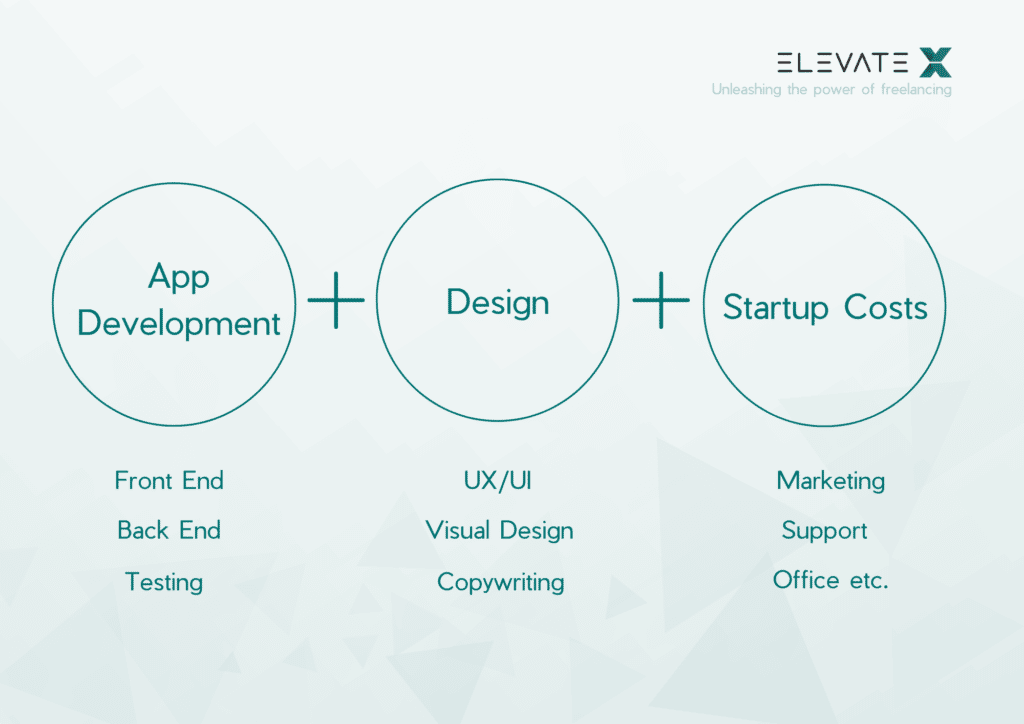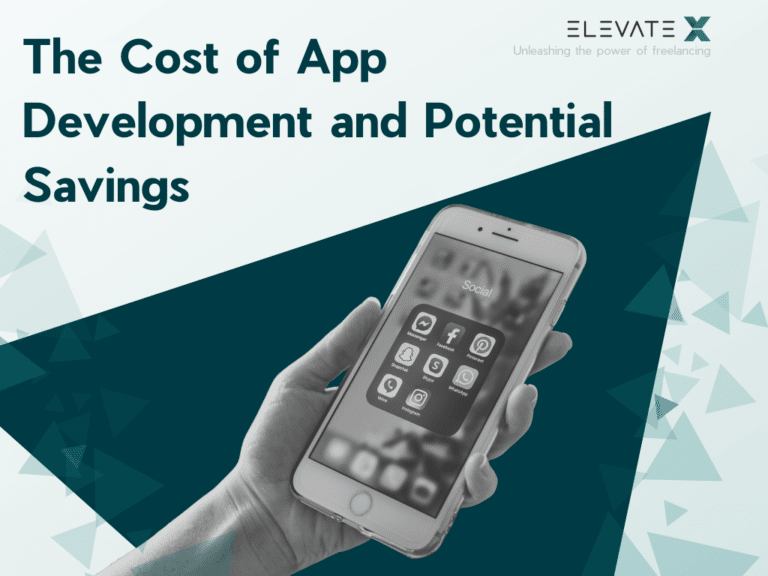In our digital and networked world, apps are playing an increasingly important role for companies. From small start-ups to large corporations, there are many different app ideas that can be realized with the right monetary commitment. However, only very few people know how expensive it can be to develop an app. The costs of app development depend on various factors.
The Costs of App Development at a Glance
The cost of app development depends very much on the size and functionality of the desired app. The platform and functionality must also be taken into account. As a rule, you can assume that no meaningful app development is possible below a price of 5,000 euros. The larger and more complex the desired app, the higher the app development costs can rise. On average, app development costs are usually between 50,000 and 100,000 euros. However, there are no upper limits. For apps with costs beyond 100,000 euros, it is usually institutions, government agencies or even large companies that invest the money in their own app. Depending on the chosen app developer, the costs can also vary.
So let’s take a detailed look at the costs of app development and find the points where you can save money.
KEY POINTS
- The cost of app development ranges from 5,000 to more than 100,000 euros.
The more extensive the range of functions of the app, the higher the costs will be.
- Good pre-planning and a reduction in the scope of functions can minimize the costs of app development.
- The type of app determines the cost factor.
What Is the Composition of App Development Costs?
The development of a new app is divided into different steps. In total, there are three different project phases with different cost shares and different weighting. Accordingly, the costs of app development are made up of three elements:
- The planning phase of app development
- The app design (UI and UX Design)
- The programming of the app
You can see that these three elements cannot be equally weighted in terms of both effort and cost. The actual programming of the app in particular can swallow up considerable sums. Many factors play a role here. The number of functions and interfaces, but also the complexity of the data used and the security of the app. All of these elements must be taken into account when setting the price. Let’s take a closer look at the individual project phases and their cost shares.
The Costs for the Individual Project Phases in App Development
The conception phase of an app usually incurs the lowest costs. Anything between 0 and 5,000 euros is possible here. The better you have already planned your own app and its range of functions, the lower the costs for this part of the program usually are.
The design and UI and UX development can cost significantly more. However, the target group and the functionality of the app also play important roles here. An app used purely for internal use with few functions incurs lower costs in design than an app for the end customer, which must be immediately understandable in both design and user interface. The costs for the design are usually between 2,000 and 15,000 euros, but can also be significantly more expensive.
The actual programming, testing the functionalities and also deploying the app on the various platforms are responsible for the high cost of app development. But again, it depends on the type and scope of the app. Especially for native apps, which are developed for both Android and iOS, the cost of app development almost doubles. It is almost impossible to give exact costs here, as the scope of functions and workload cannot be estimated across the board. But with development costs of up to 100,000 euros and more, the largest part of the costs of app development lies in the programming and development of the interfaces.

What Are the Types of Apps?
Overall, three different types of apps are distinguished: Native apps, web apps and hybrid apps. These differ not only in function and possibilities, but also in the cost of app development.
Native apps are apps that are developed for a specific operating system. Nowadays, these are usually apps for either Android or the iOS operating system. If you want to reach as many customers as possible, you should develop the app for both systems. However, this nearly doubles the cost of app development. Here, one usually calculates with a factor of 1.9, since only very small parts of the programming can be taken over.
Web apps are applications that can be easily accessed via any web browser installed on the end device. The content and design are fully tailored to mobile devices. As a rule, the costs of app development are particularly low for web apps, since they can be programmed like a website. If functions of the app are also to be usable offline, functions of native apps must be integrated. These are called progressive web apps and are significantly more expensive to develop.
Hybrid apps bring together the advantages of native and web apps. As a rule, different frameworks are used here, which can fall back on native UI processes and components. Thanks to uniform programming, there are no significantly higher costs for development for other operating systems. The programming is thus more independent of the platform and can still fall back on many functions. Nevertheless, there are restrictions here that can only be lifted or circumvented by native apps. It is therefore important to seek professional advice at the conception stage as to whether a hybrid app is sufficient for the desired range of functions or whether a native app is necessary.
How Long Does It Take To Develop an App?
The development time of an app depends on two different factors. On the one hand, the complexity of the app and the design. On the other hand, there is also the size of the developer and programmer team. With a larger team, the work can be accelerated significantly, but this can also drive up the cost of app development. While simple apps can usually be realized in just one month, the average duration of app development is between two and four months. However, complex apps can also require much more time until all functions and interfaces are implemented.
Looking for an app developer?
We got you covered!
How to Save Costs in App Development
The costs of app development can quickly pose problems, especially for young companies and start-ups. Even freelancers rarely have the financial budget to easily handle a complex app development. But there are individual points where you can minimize the costs.
Savings Potential in Planning and Design
Especially the costs of conception and planning can be reduced very well if you invest a little more time yourself. Analyzing comparable apps, familiarizing yourself with the subject matter and, above all, developing your own concept and design can make many points obsolete in advance. If you have your own in-house design team or already have a corporate design, you can also reduce the costs of design development even further.
Savings Potential Through Structural Organization
Time is money. Therefore, it is important that the contracted agencies do not waste time. So be available for queries at any time and provide as much information as possible. Clear rules regarding processes and responsibilities help to save time and to work in a more focused way. Take over parts of the work that could cost the agencies unnecessary time. For example, you can provide the images and texts for the app stores yourself and thus minimize the time needed to publish the app.
Savings Potential by Selecting the Right Partners
It is always useful to compare the different agencies and get quotes. Large agencies usually also call the higher prices. Freelancers are cheaper in comparison, which minimizes the costs. However, the risk of failure is higher with a freelancer or a small agency. Here you have to weigh the costs and the risk against each other. For smaller apps, for example, a freelancer can significantly reduce the cost of app development. The more complex the app, the more important the security of a larger agency.
Avoid Reinventing from the Start
Not every function has to be programmed from scratch. Apps such as reservation systems or store systems can often be built more easily with an app construction kit. This saves an enormous amount of money in programming with an equally satisfactory result.
Reduce the Range of Functions
The smaller the functional scope of an app, the lower the costs for app development. For this reason, it usually makes sense to initially reduce an app to its basic functions and launch it on the market. The range of functions can be gradually expanded as profits are realized with the app. Basic user satisfaction must always be the primary goal of development.
Conclusion: The Costs of App Development Can Only Be Minimized to a Certain Extent
The pure developer costs can usually only be minimized to a very small extent. It is primarily the accompanying costs that can be reduced. By reducing the scope of services, through extensive advance planning and also through a design that has already been thought through in advance, many small cost centers can be further minimized, which in the end has a significant effect on the total costs of app development. The choice of suitable developers also plays an important role. While freelancers are often cheaper, they can be too slow for large projects and offer too little security. Larger agencies usually charge higher prices, but they develop the apps faster due to their manpower and also offer greater reliability.
The average cost of developing an app is between 5,000 euros and 100,000 euros. Very few apps with a very limited range of functions and design can be realized below this cost range. The cost range is open upwards. Significantly higher costs can also be incurred here, if they are required. A good example is the current Corona warning app with noticeably higher development and operating costs.
The answer to this question depends on many factors. The more complex the app, the more likely you are to incur higher ongoing costs to operate and maintain it. A pure web app usually involves the least amount of maintenance. Still, you can usually expect to incur follow-up costs with an app. In addition, you can expand the functionality of your app over time. In this case, you will incur additional costs for programming.
The duration of an app development depends on various factors, as does the cost of the app development. These include not only the complexity of the app, but also the size of the executing team. On average, you can expect development times of one to two months for a simple app, two to four months for an average app, and four to twelve months for a complex app. Deviations are possible at any time and depend on too many factors to be able to name and specify them specifically.








